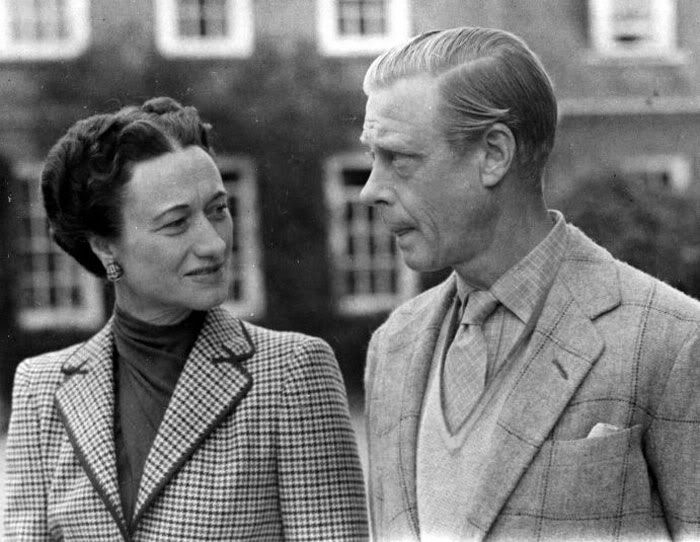
Thursday, December 29, 2011
The Classic V-Neck
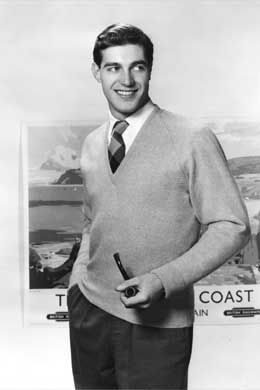
Though largely forgotten today, the deep vee was once an elementary style in men's knitwear that prevailed for several decades in the post-war period. The long yoke not only properly accommodated a tie and shirt collar, but also aesthetically enhanced one's torso by emphasizing shoulder breadth, much like a tailored vest. As the casual revolution swept the United States in the 90s, however, the number of men wearing traditional coat and tie markedly declined, which presaged the demise of the classic v-neck. Moreover, ubiquitous climate control virtually eliminated knitwear's chief practicality in dress clothing: warmth through layering. Consequentially, merchants adapted to consumers' dramatic shift in taste by offering increasingly shallow vees, which did not require collared shirts underneath. Although the deep v-neck has disappeared, its close relative, the cardigan, has made a recent resurgence in youth fashion.
Wednesday, December 28, 2011
Pringle Cardigan
While the content of this blog is primarily devoted to men's knitwear, I would like to take a moment to share a recent acquisition that made a wonderful Christmas gift for my mom - this Pringle cashmere cardigan below. It is styled similarly to Ballantyne's famous Thorley, with a crew neck and gold-tone buttons, but with the addition of beautiful cable-stitching down the front panels. The cashmere has all the hallmarks of the best Scottish product. Beefy and tensely knit with a hand closer to merino wool than what usually passes for cashmere today, it promises, nonetheless, to soften after washing. With proper care, it will last a lifetime and beyond while retaining its shape and becoming ever more luxuriously soft.
This cardigan likely was one of the last garments made for The Scotch House, which shuttered in late 2001, for it bears no Royal Warrant, which Pringle lost one year earlier as a result of its sale to Hong Kong's Fang Brothers.
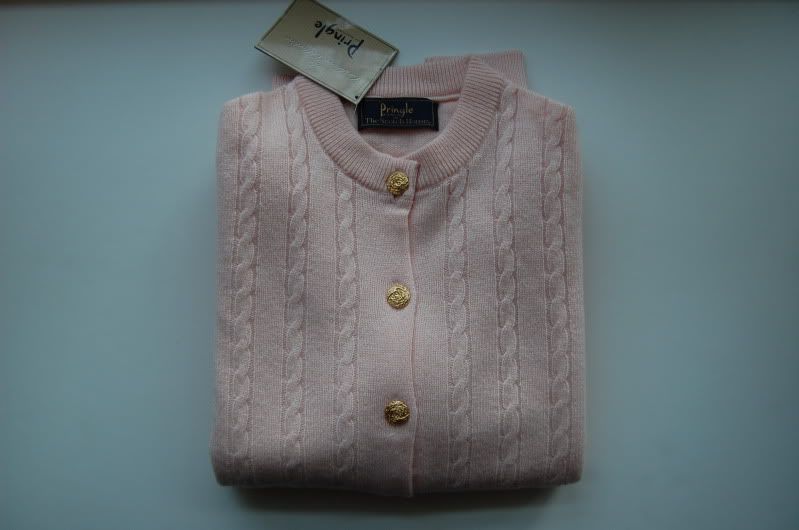
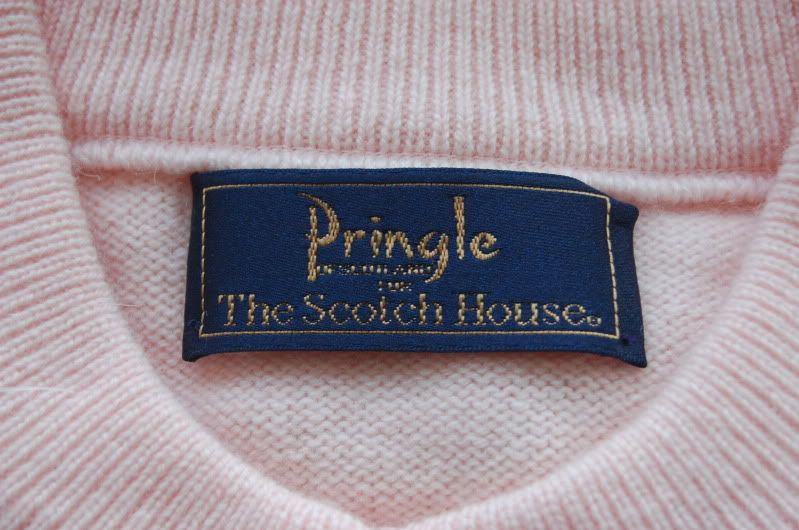

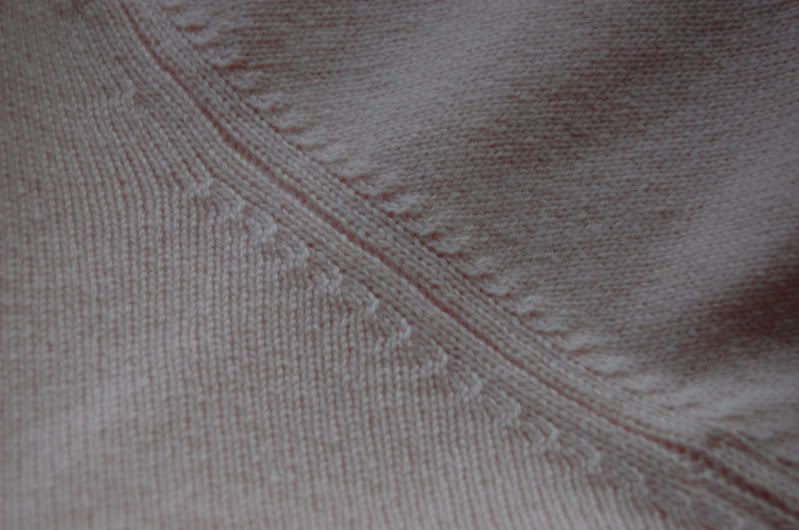
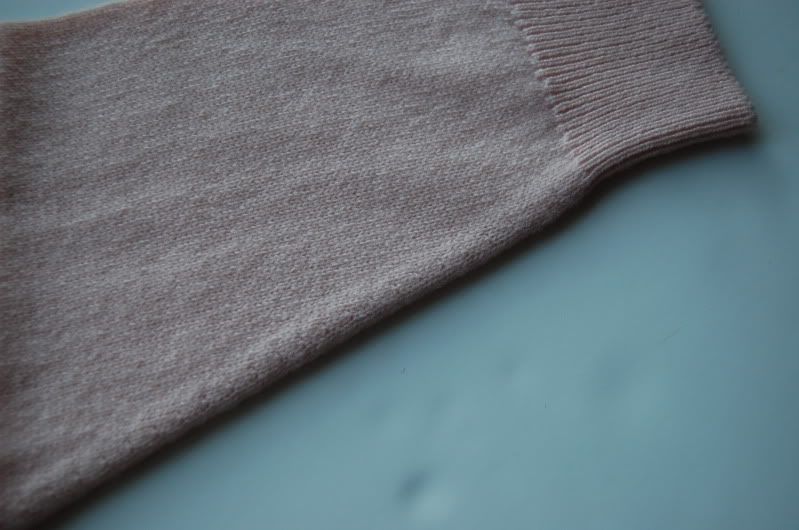
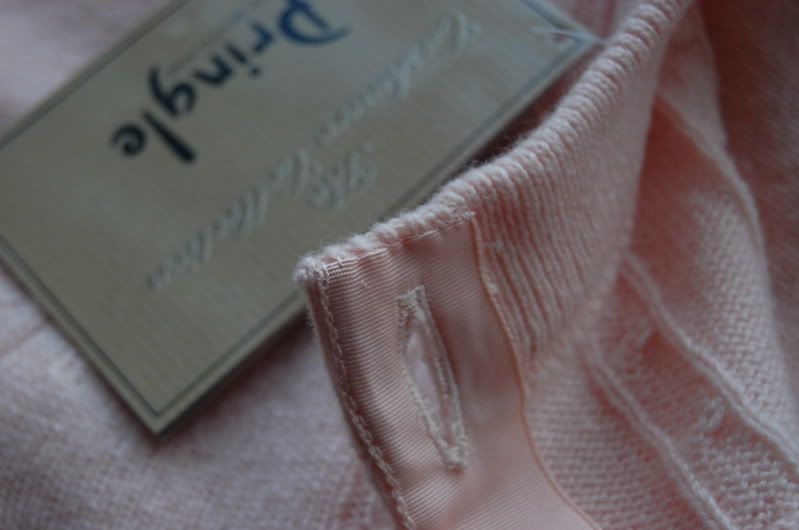
This cardigan likely was one of the last garments made for The Scotch House, which shuttered in late 2001, for it bears no Royal Warrant, which Pringle lost one year earlier as a result of its sale to Hong Kong's Fang Brothers.






William Lockie for A.P.C.
In a boost to the 137-year-old Scottish knitwear manufacturer, William Lockie has teamed up with the French fashion label A.P.C. to produce a collaboration of lambswool cardigans.
Read more about it here on Selectism.
Read more about it here on Selectism.
Tuesday, December 6, 2011
Braemar Intarsia
Like many of Scotland's knitwear factories, Braemar was founded originally as the hosiery manufacturer Innes, Henderson and Co in 1868 in Hawick. As soft cotton eventually displaced scratchy wool in the undergarments trade in the late 19th century, the firm shifted production toward knitted outerwear styles such as the newly innovated pullover sweater. By 1920 Braemar had grown to be Hawick's largest enterprise and pioneered the widespread use of cashmere in knitwear. The Great Depression and Second World War, however, erased much of the company's primacy in the luxury market. The tumultuous post-war period of vacillating ownership presaged Braemar's decline and absorption by the international vertical conglomerate, Dawson International, in 1970. After four years, Dawson merged Braemar with another major Hawick subsidiary, Pringle, and the company ceased to trade within a short time. Decades later when the group struggled to retain its global hegemony, Dawson resurrected Braemar as a fantasy label, wholly owned and produced by its flagship subsidiary, Ballantyne of Innerleithen. After Ballantyne's sale to the investment group, Charme, in 2004, the Braemer name passed into Italian hands. In 2011 the ruins of Braemar's deserted Victoria Works at the bank of the Teviot river were at last demolished under municipal order.
The following video shows a rough overview of the intarsia process at (formerly Ballantyne) Caerlee Mills:
The following video shows a rough overview of the intarsia process at (formerly Ballantyne) Caerlee Mills:
Subscribe to:
Posts (Atom)